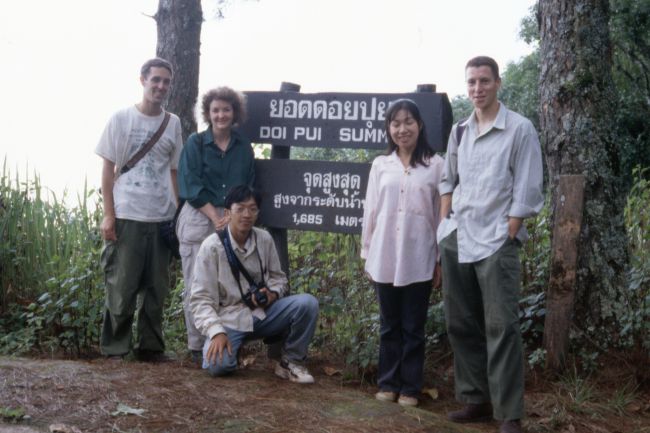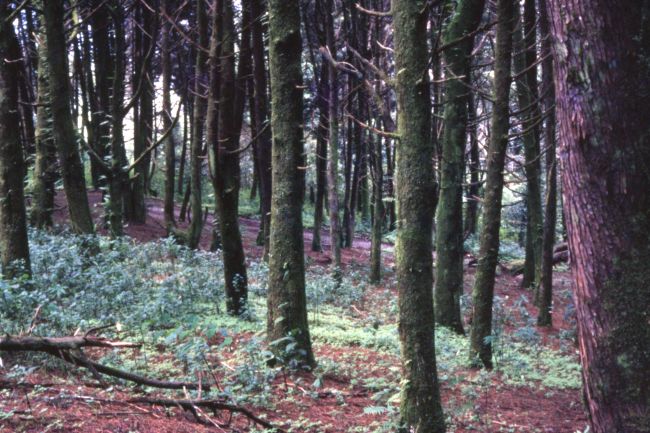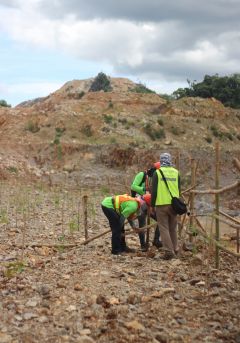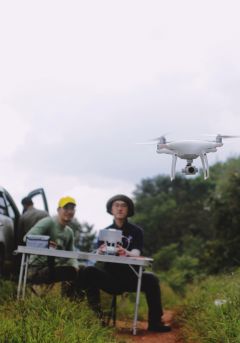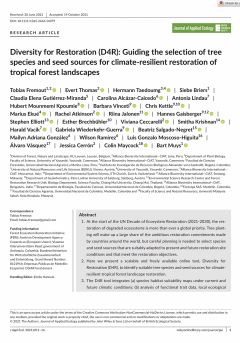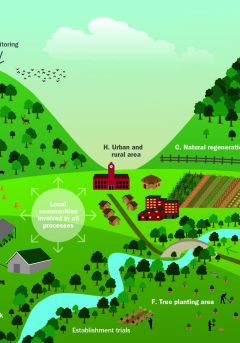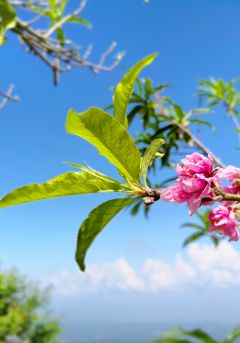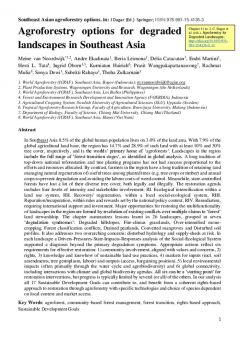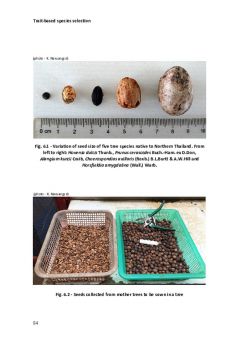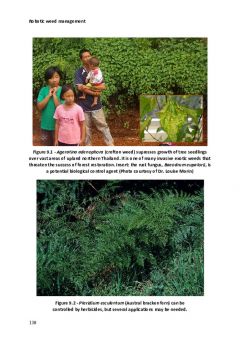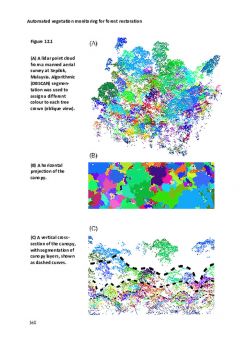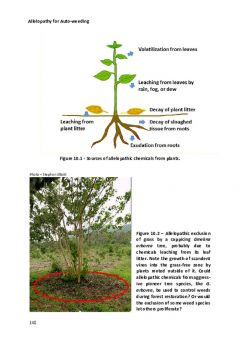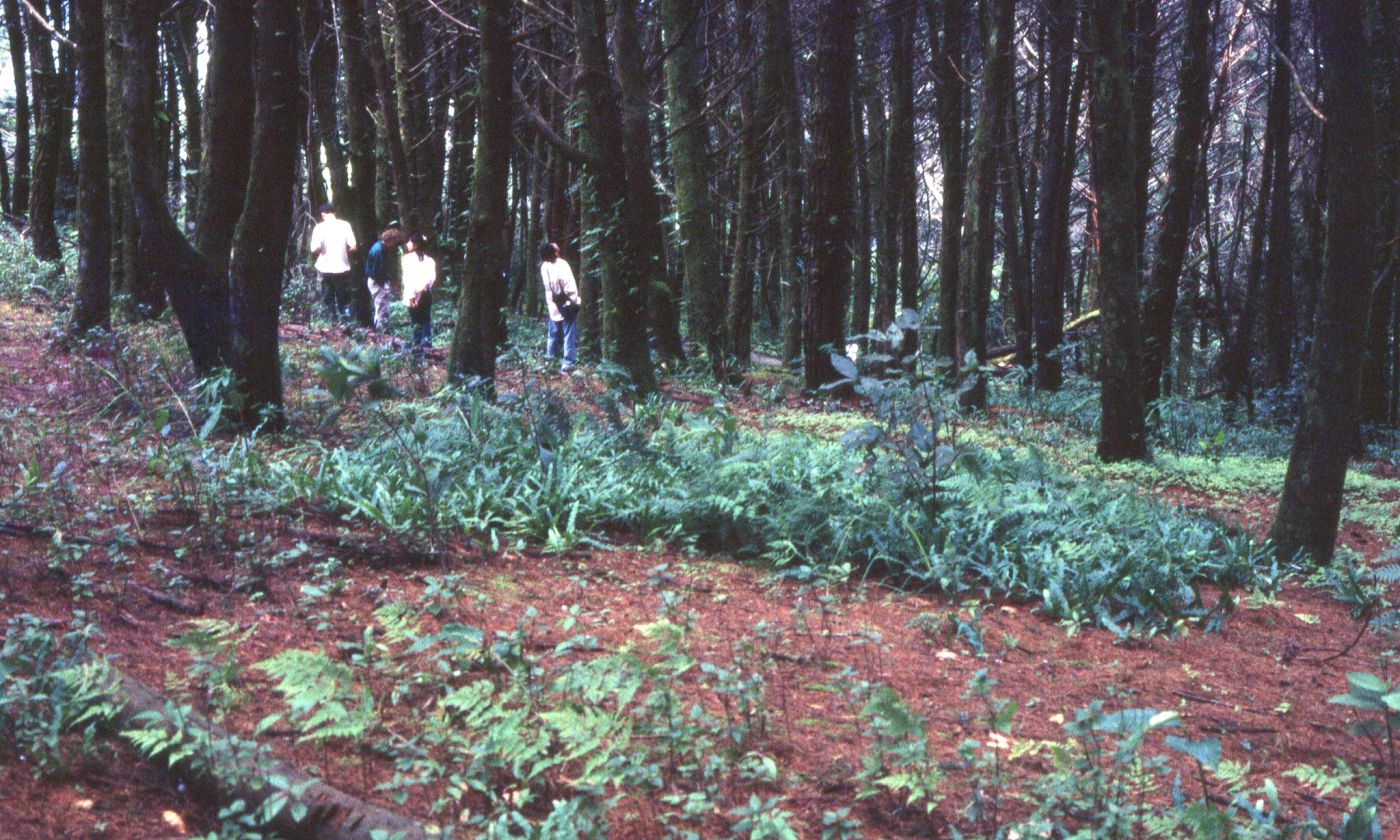
In 1999, Forest Restoration Research Unit (FORRU) assisted Doi Suthep-Pui National Park Authority with enrichment planting of an aging plantation of Cupressus torulosa D.Don (Cupressaceae) (an exotic species), on the summit of Doi Pui, with indigenous framework tree species. The plantation had a very dense canopy and a dense root mat, visible at the soil surface. Consequently, seedlings of native forest trees had not established on the site.
In May 1999, 1,440 trees of 24 species from FORRU-CMU's Doi Suthep nursery were planted over 4 rai of the site beneath the C. torulosa trees. Totally 240 trees of 23 species, were monitored 5 times for growth and survival until August 2002.
The overall percent mortality of the planted trees was 41%, whilst the growth of surviving trees was exceedingly slow. The pioneer species suffered 100% mortality, whereas survival rates of climax species were around 70 %. Most trees failed to grow taller than 1 m in 3 years (from 30-50 cm tall at planting time). The most likely explanation was that the planted trees were deprived of light and suffered from root competition, due to the dense of the C. torulosa plantation, which contributed to the poor performance. Therefore, FORRU-CMU recommended, the C. torulosa trees should be thinned before enrichment planting is made at this site.
This recommendation was applied in 2005, 200 saplings of framework tree species were planted in a thinned-out subplot of the C. torulosa plantation, whilst another 200 were planted in a control (non-thinned) sub-plot. The planted trees were monitored 4 times for growth and survival over three years after planting from 2005 until January 2008.
Survival was higher in the thinned plot (35.61%) than in the non-thinned plot (17.27%) - even though both numbers were unacceptably low. However, almost all of the planted trees in the thinned plot grew better than in the non-thinned plot. Root collar diameter and height growth of almost all trees were higher with thinning than in the non-thinned plot. Therefore, thinning of C. torulosa trees at this site (at least 30% or higher) is highly recommended, before any further enrichment planting is implemented. However, although thinning would very likely improve the performance of planted framework tree species at this site, their performance would most likely remain low compared with other FORRU-CMU field trials in more open areas.
Detailed results are available in the project reports via the download panel.
Rapid site assessment
The concept and methodology to determine the level of degradation, which is related to activities should be implemented and the intensity of the work required for the target...
Field Performance of Planted Trees
Monitoring is essential for adaptive management. Click here to learn how to measure tree survival and growth and find out if your restoration plan is working.
11: Comparison of seedling detection and height measurement using 3D point cloud models from three software tools: applications in forest restoration
ABSTRACT: A challenge for forest restoration is monitoring success, particularly in terms of seedling survivorship. 3D-point-cloud models, generated from aerial images taken from unmanned aerial...
12: UAV-derived forest degradation assessments for planning and monitoring forest ecosystem restoration: towards a forest degradation index
ABSTRACT: Global initiatives such as the Bonn Challenge and the New York Declaration on Forests have prompted large-scale forest restoration projects to combat land degradation, preserve...
13: Diversity for Restoration (D4R): Guiding the selection of tree species and seed sources for climate-resilient restoration of tropical forest landscapes
ABSTRACT: 1. At the start of the UN Decade of Ecosystem Restoration (2021–2030), the restoration of degraded ecosystems is more than ever a global priority. Tree planting will make up a large...
14: Ten guidelines for tree planting initiatives to optimise carbon sequestration, biodiversity recovery and livelihood benefits
ABSTRACT: Urgent solutions to global climate change are needed. Ambitious tree‐planting initiatives, many already underway, aim to sequester enormous quantities of carbon to partly compensate for...
15: Allelopathic Effects of Prunus cerasoides Buch.-Ham ex. D. Don Leaves on Common Weeds in Forest Restoration Sites
ABSTRACT: Weeding by hand tools is the most expensive part of forest restoration projects, so herbicides are an attractive alternative weeding technique. However, synthetic herbicides may have...
16: Agroforestry options for degraded landscapes in Southeast Asia
ABSTRACT: In Southeast Asia 8.5% of the global human population lives on 3.0% of the land area. With 7.9% of the global agricultural land base, the region has 14.7% and 28.9% of such land with at...
17: A trait-based approach for selecting tree species for aerial seeding
ABSTRACT: We review recent ecological research on functional traits that can aid selection of tree species for restoration by aerial seeding. A major barrier in selecting species for restoration...
18: Innovation and robotics in forestry weed management
ABSTRACT: Traditional and established methods of weed management are outlined, from hand-weeding, to the use of herbicides and biological control. Recent new developments in detection and control...
19: Automated vegetation monitoring for forest restoration
ABSTRACT: We discuss the potential of automating vegetation monitoring, to aid forest restoration. We propose that automated monitoring focuses on estimating forest biomass and tree diversity,...
20: Allelopathy for weed management in forest restoration
ABSTRACT: In forest restoration, weeds compete with tree seedlings for water, nutrients, sunlight and space, as well as act as habitat for pests and diseases. Allelopathy - the inhibition of one...

